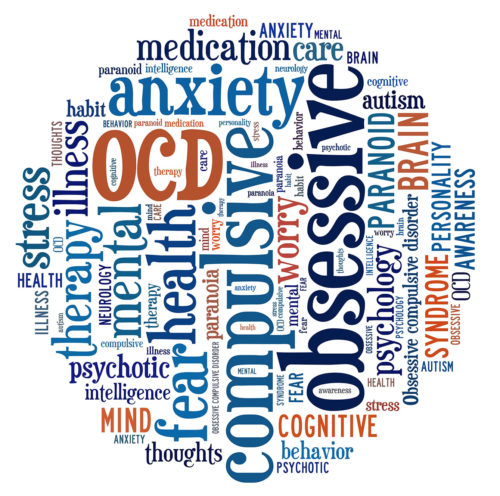
Some of us television connoisseurs may automatically think of the show “Monk” when the topic of OCD or obsessive compulsive disorder comes up. The character’s tendency to wipe his hands, create an orderly household, and neurotically sterilize and control his environment are attempts to create humor and entertainment. However, outside of the Hollywood glamour are the functional disruptions that OCD can provide in someone’s life and it can start in very young children.
The Diagnostic and Statistical Manual of Mental Disorders, 5th edition (DSM-5) lays out qualifying symptoms for a diagnosis of obsessive compulsive disorder:
- A presence of obsessions, compulsions, or both. Obsessions are thoughts, impulses or urges that cause unwanted stress or anxiety. Compulsions are actions that are repetitive in nature in order to alleviate obsessions or stress/anxiety that results from those obsessions. This is a very simplistic definition, so feel free to review the DSM-5 manual for yourself for greater detail.
- Obsessions and/or compulsions end up being very time-consuming (at least one hour of time) and can take away from other important areas of occupational and social participation.
- A true diagnosis of OCD is obtained if no other mental disorder can better explain the child’s condition https://beyondocd.org/information-for-individuals/clinical-definition-of-ocd. For example, OCD is commonly mistaken for autism spectrum disorder because of repetitive or ritualistic behaviors. Sometimes, OCD can be diagnosed on top of autism but there are incidences in which both diagnoses are separately present.
OCD symptoms can start as early as 3 years old and affects up to 1 in 100 school-aged kids. The exact cause of OCD is unknown, but research shows that OCD may be triggered by stressful or traumatic events and have a genetic connection (Obsessive-Compulsive Foundation, 2006, https://adaa.org/sites/default/files/How-to-Help-Your-Child-A-Parents-Guide-to-OCD.pdf).
So in a realistic situation at home, what does OCD look like during childhood? Common fears that turn into obsessions include fear of getting dirty or contaminated, fear of being harmed by others, or fear of doing something bad or violent (Child Mind Institute, 2018, https://childmind.org/guide/obsessive-compulsive-disorders/obsessive-compulsive-disorder-what-is-it/). As a result of these fears, children with OCD will often participate in compulsive behaviors that seem somewhat bizarre and take up a lot of their time. Examples include excessive handwashing or other hygiene-related rituals, locking and unlocking the doors multiple times, touching and lining up objects, avoiding any time of activity that presents even the slightest risk of danger, hoarding objects, etc. When parents or loved ones attempt to correct or interrupt these rituals, it can further upset the child and add to a vicious cycle.
Pediatric occupational therapy has its place in addressing the functional deficits that can occur with OCD in children. Some of the following may be appropriate intervention approaches, depending on the child’s individual needs:
Mindfulness and other relaxation techniques: Mindfulness and relaxation techniques are very popular for reducing stress and anxiety in adults as well as children. The goal would be to have the child adopt these strategies in order to provide a substitute for the compulsive behavior they frequently use to alleviate stress.
Use of purposeful activities: This would include engaging the child in activities of interest, whether that be current activities or activities they used to enjoy prior to obsessions and compulsions taking up their time. Purposeful activities include anything from self-care activities to hobbies, leisure, and social activities that bring the child joy. The idea is to introduce activities in a graded manner in order to effectively distract the child from obsessive and compulsive participation.
Time management skills: As mentioned earlier, obsessions and compulsions take up a lot of time in a child’s day, and take away from the child’s participation in other activities of importance. Time management interventions aim to reduce the child’s time spent in unhealthy compulsive actions in order to have the child participate in other daily tasks that matter (i.e., self-care, school, social activities, etc.)
Desensitization techniques: If the child has any sensory-based needs that are fueling the obsessive-compulsive behaviors, then the OT may take this approach. Consult with an OT that specializes in sensory integration in order to get an appropriate assessment and treatment plan for your child.
class=”g5-color-primary”Parent/caregiver education: Of course, a huge chunk of the OT’s time spent with the child will also include education of parents and caregivers in order to carry out learned interventions at home.
Consult with a specialist if you believe your child may possibly exhibiting symptoms of OCD. Consult with a wide variety of professionals, including an occupational therapist in order to provide your child with all of the available options.





